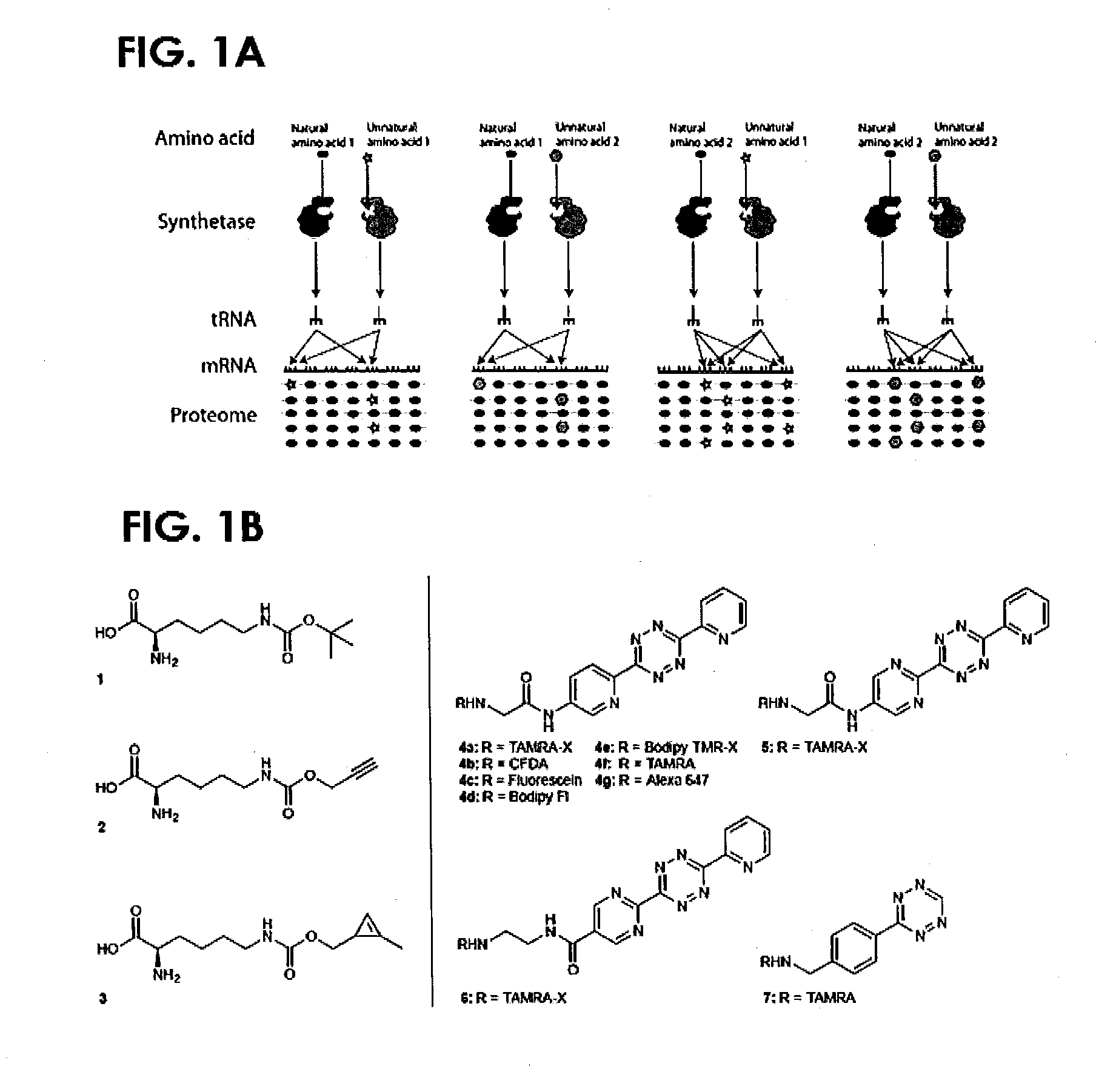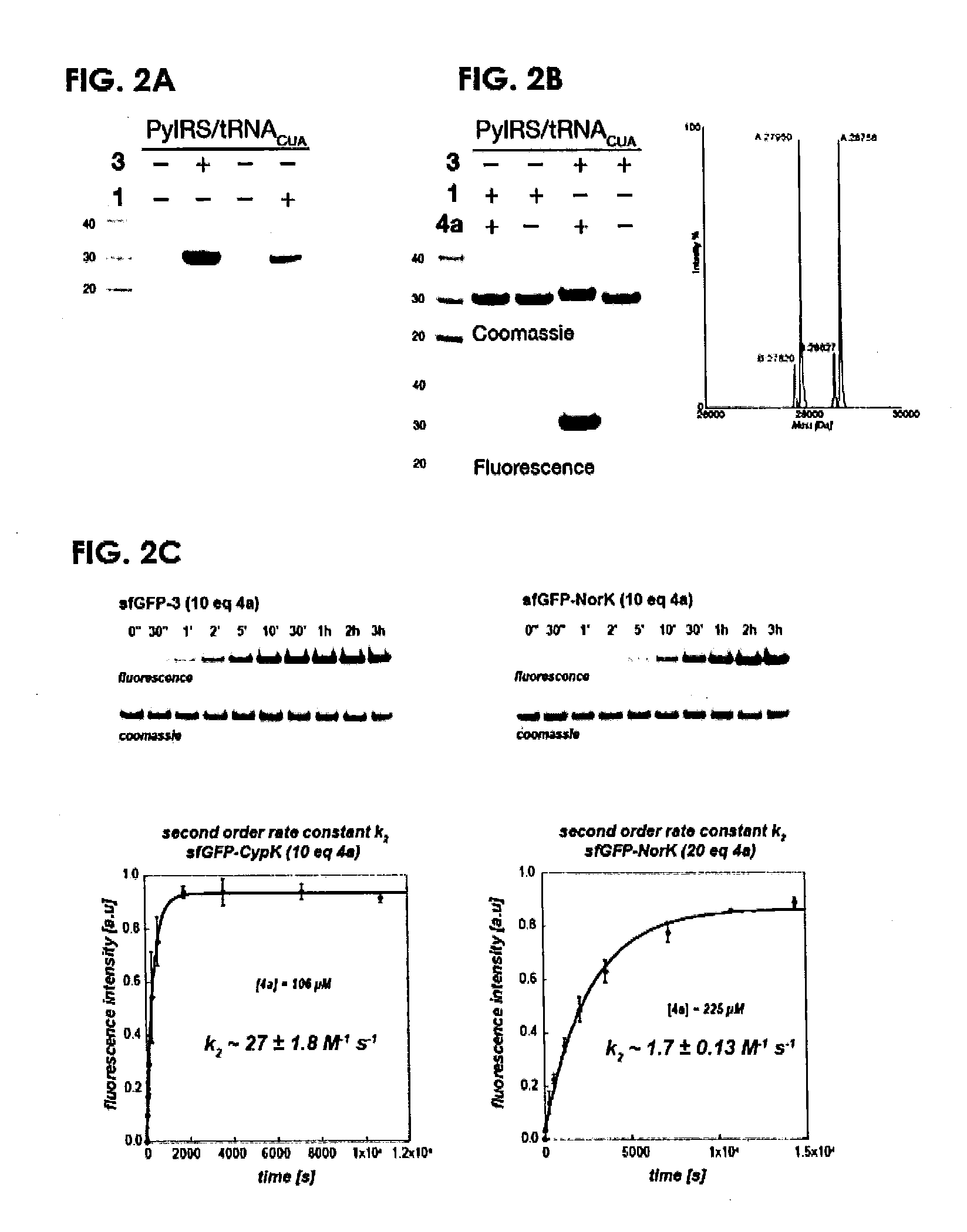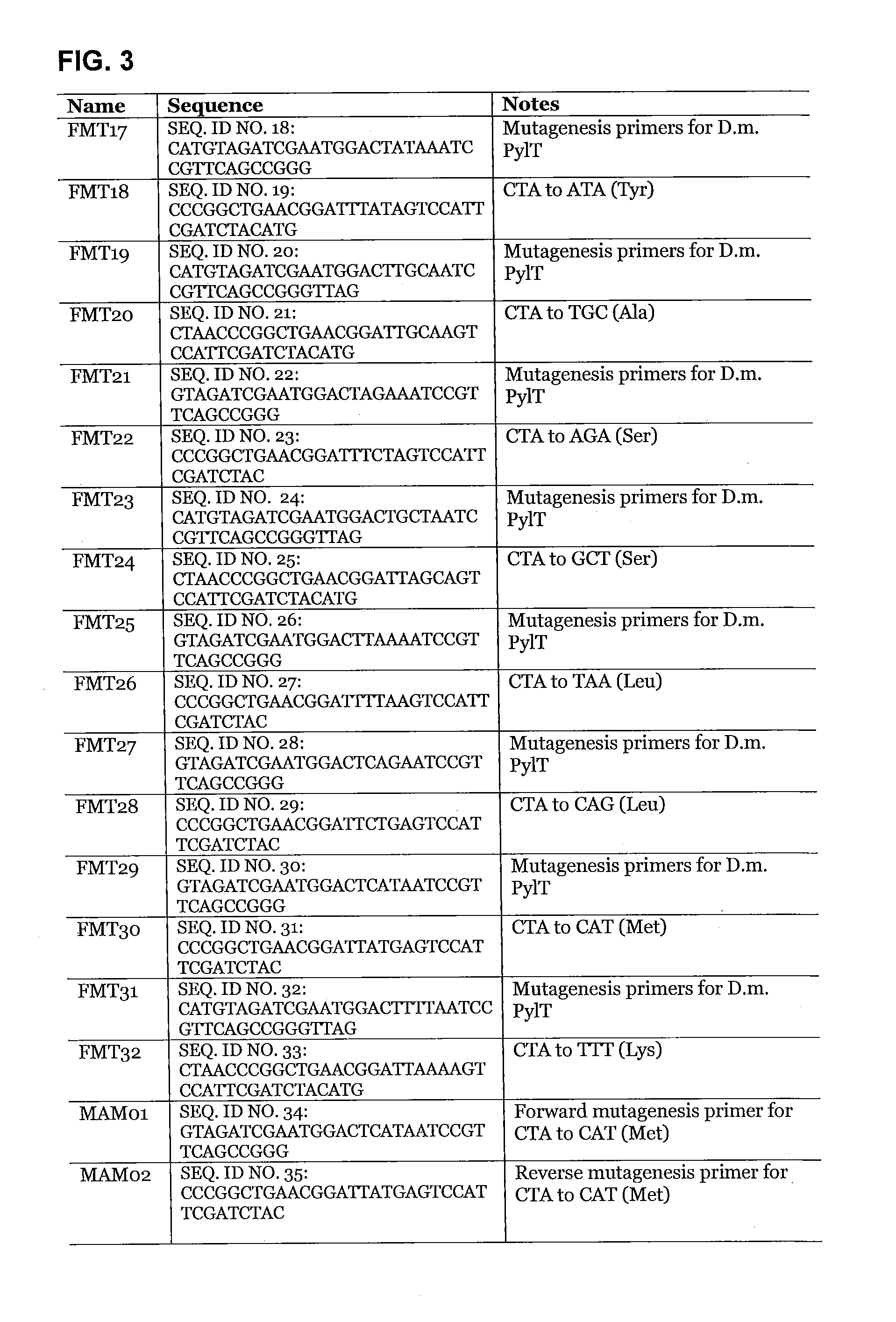Cyclopropene amino acids and methods
- Summary
- Abstract
- Description
- Claims
- Application Information
AI Technical Summary
Benefits of technology
Problems solved by technology
Method used
Image
Examples
example 1
Synthesis of Nε-[((2-methylcycloprop-2-en-1-yl)methoxy)carbonyl]-L-lysine 3
[0179]A class of reaction useful in protein labelling is the very rapid and specific inverse electron demand Diels-Alder reaction between strained alkenes (or alkynes) and tetrazines.21-25
[0180]While we, and others, have previously encoded unnatural amino acids bearing strained alkenes, alkynes and tetrazines via genetic code expansion and demonstrated their use for site-specific protein labelling via inverse electron demand Diels-Alder reactions,26-30 all the molecules used to date are rather large. We have previously shown that a variety of carbamate derivatives of lysine are good substrates for PylRS,31 and it has been demonstrated that 1,3 disubstituted cyclopropenes, unlike 3,3 disubstituted cyclopropenes,32,24 react efficiently with tetrazines.22 We therefore designed and synthesized a carbamate derivative of lysine, bearing a 1,3 disubstituted cyclopropene (Nε-[((2-methylcycloprop-2-en-1-yl)methoxy)ca...
example 2
Encoding the Site-Specific Incorporation of 3 in E. coli
[0188]We demonstrated that 3 is efficiently and site-specifically incorporated into recombinant proteins in response to the amber codon using the PylRSARNACUA pair and an SfGFP gene bearing an amber codon at position 150 (Supplementary FIG. 2a). The yield of protein is 8 mg per litre of culture, which is greater than that obtained for a well-established efficient substrate for PylRS Nε-[(tert-butoxy)carbonyl]-L-lysine 1 (4 mg per litre of culture)33 Electrospray ionisation mass spectrometry of SfGFP bearing 3 at position 150 (SfGFP-3) confirms the incorporation of the unnatural amino acid (Supplementary FIG. 2b). SfGFP-3 was specifically labelled with the fluorescent tetrazine probe 4a, while SfGFP-1 was left unlabelled (Supplementary FIG. 2b). 2 nmol of SfGFP-3 was quantitatively labelled with 10 equivalents of 4a in 30 minutes, as judged by both fluorescence imaging and mass spectrometry (Supplementary FIG. 2b). The second o...
example 3
Genetic Encoding of 3 in Human Cells
[0190]Full-length mCherry-3-GFP-HA was expressed in HEK293 cells carrying the PylRSARNACUA pair and mCherry-TAG-EGFP-HA (a fusion between the mCherry gene and the EGFP gene with a C-terminal HA tag, separated by the amber stop codon (TAG)).18 Full-length protein was detected only in the presence of the 3 (FIG. 8a. Full gels in Supplementary FIG. 11). mCherry-3-EGFP-HA was selectively labelled with 4a, while mCherry-1-EGFP-HA was not labelled (FIG. 8b)18 demonstrating the site-specific incorporation of 3 with the PylRS / tRNACUA pair in human cells.
PUM
| Property | Measurement | Unit |
|---|---|---|
| Time | aaaaa | aaaaa |
Abstract
Description
Claims
Application Information
 Login to View More
Login to View More - R&D
- Intellectual Property
- Life Sciences
- Materials
- Tech Scout
- Unparalleled Data Quality
- Higher Quality Content
- 60% Fewer Hallucinations
Browse by: Latest US Patents, China's latest patents, Technical Efficacy Thesaurus, Application Domain, Technology Topic, Popular Technical Reports.
© 2025 PatSnap. All rights reserved.Legal|Privacy policy|Modern Slavery Act Transparency Statement|Sitemap|About US| Contact US: help@patsnap.com



